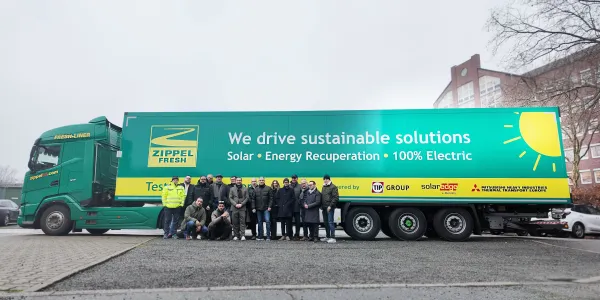TIP Group’s efforts to reduce our carbon footprint
Over the past two years, we saw the results of several energy efficiency initiatives and completed our second annual calculation of scope 3 carbon emissions. This article outlines our progress in carbon reduction efforts, our commitment to carbon neutrality, and insights from evaluating our value chain's carbon footprint.
“95% of our workshops have LED lighting, putting us ahead of schedule to meet our 2025 target of 99%”. – Highlight from our Sustainability Report
Our carbon footprint
Earlier this year, we undertook a comprehensive reassessment of our carbon footprint in collaboration with Watershed climate software. Following the Greenhouse Gas (GHG) Protocol, emissions were categorized into three distinct scopes:
- Scope 1: Includes direct emissions from sources owned or controlled by the organization, such as company vehicles and on-site fuel combustion.
- Scope 2: Encompasses indirect emissions resulting from the purchase of energy, primarily electricity, steam, heat and cooling.
- Scope 3: Covers all other indirect emissions across the company’s value chain, including upstream and downstream activities.
As an equipment service provider, the vast majority of TIP Group’s emissions fall under Scope 3, with the largest contributors being downstream leased and sold asset emissions, as well as upstream supply chain activities.
We are committed to reducing our carbon footprint as part of our “for Generations to Come” sustainability strategy. To achieve this goal, we have set the following targets:
- Achieve carbon neutral operations by 2030 – this includes scope 1 & 2 emissions
- Achieve carbon neutral value chain by 2050 – this encompasses all scopes
To achieve these goals, we are focusing on several energy efficiency initiatives across our operations and working closely together with customers, suppliers and other partners to support their transition to low-carbon business models and technologies.
Reducing our emissions
Scope 1 and scope 2: energy efficiency initiatives
In 2023, our global scope 1 & 2 carbon emissions totalled 24,507 metric tonnes of CO2. While this represents only 1.8% of our total calculated emissions, we are committed to aligning our business operations with the Paris climate objectives.
Across the company, we have already implemented approximately 30 energy efficiency initiatives to reduce our carbon footprint. In 2022 alone, these environmental initiatives resulted in energy savings of 534,137 kWh, equivalent to approximately 106.8 tonnes of reduced CO2 emissions. Here are two examples of our ongoing efforts:
- Rooftop solar panels: We have installed solar panel systems in two locations (Recklinghausen in Germany and Liscate in Italy), avoiding approximately 18 tonnes in carbon emissions and generating 54,000 kWh of renewable energy. Our goal is to install panels at workshops across all our regions by 2025, with a peak production capacity of 1,650 kilowatts.
- LED lighting: We aim to install more energy-efficient LED lighting at 99% of our workshops by 2025. Currently, 95% of our workshops have LED lighting, putting us ahead of schedule.
To further reduce our energy consumption and emissions, we are exploring opportunities to electrify our company cars fleet and convert yard equipment, such as terminal trucks and forklifts, to zero-tailpipe emission alternatives.
Scope 3 emissions: sustainable products and services
In 2022, we undertook our first calculation of scope 3 emissions, and earlier this year, we completed our second full annual carbon footprint assessment. Between 2022 and 2023, we significantly improved the scope and granularity of our carbon calculations. This included a more detailed analysis of the impact of various asset types and country-level impacts. This more comprehensive approach has resulted in an increase in our reported greenhouse gas emissions year-over-year.
The results of our 2023 assessment are presented in the table below. This assessment includes emissions across all countries in which we operated in 2023, including Canada. The results reveal that the majority of our emissions fall into three main categories: upstream emissions from capital goods (36%); downstream leased assets (35%); and emissions from the use of sold products (21%). These three categories contribute significantly to our total scope 3 emissions.

To address these significant sources of downstream emissions, TIP Group has introduced innovative products and services for our customers. Our sustainable product offerings such as the e-reefers, e-trucks and eLCVs along with our telematics services bundled in TIP Insight are key to achieving this ambition. Additionally, our maintenance and repair program as well as our maintenance and repair program as well as our extensive refurbishment program contributes to a circular economy, extending the lifespan of our assets and promoting resource efficiency by maximizing the use of existing materials. All of this will prove to be key contributors in achieving our goal of reducing our Scope 3 emissions.
Looking toward the future
In the near term, we're focusing on developing a climate transition plan aligned with the 1.5°C warming scenario. This plan will include ambitious, science-based emission reduction targets and outline identified emission reduction opportunities. These targeted actions will not only improve the resilience and sustainability of our business but also prepare TIP Group for the low-carbon economy of the future.



